Business Taking Care of
Energy-saving incentives and opportunities


Energy-saving incentives and opportunities


Thank you for being our customer!
We’ve powered our communities for more than a century. And we’ll keep providing the reliable, low-cost electricity you depend on. This includes offering our customers energyefficiency programs, rate options, and expertise to help them achieve their energy-related operational goals.
Our efficiency programs save energy over the long term. And they provide cash rebates and grants to lower your up-front project costs and deliver a return on your investments in just a few years. Several new program offerings help customers like you take advantage of the latest electric technologies, such as electric vehicles, battery powered equipment, and heat pumps.
To learn more about these opportunities, contact one of our Industrial Services Engineers or Energy Management Representatives (inside back cover). Whether you’re designing a new building or retrofitting an existing structure, their expertise can help you realize your business goals.
 Tim Rogelstad President
Tim Rogelstad President
New look, easy navigation, and robust information!
Our updated Ways To Save section on our website offers commercial customers options to save energy and reduce operating costs. Rebate program information and forms are also available. otpco.com/WaysToSave

My Account offers a customizable view, interactive usage information, alerts, service request options, a robust bill payment service, and more.
• Use our account grouping feature to simplify managing multiple locations.
• Connect additional users to specific accounts and set up permissions to limit the information seen.
• Use our dashboard data view to export usage and billing information in an easy-to-use format.
Visit otpco.com and click Log In, or download the MyMeter™ app from Google Play or the Apple store. Open and select Otter Tail Power Company.
Customers must provide detailed receipts and equipment documentation, including manufacturer and model numbers, and a signed Customer Rebate Application or other rebate forms.
• Bids and quotes aren't acceptable proof of purchase.
• Documentation for air conditioner and heat pump rebates must clearly indicate ducted or ductless design and other required performance ratings.
• Acceptable proof of equipment efficiency, where required, includes AHRI certificates reflecting required equipment efficiency levels or manufacturer specification sheets with proof of efficiency levels for models installed.
• Find AHRI certificates at ahridirectory.org
• Any other documentation of equipment efficiency must receive prior approval.
• Customer rebate forms may be found online at otpco.com/RebateApplication
• Some programs have additional guidelines and documentation requirements. Contact one of our representatives listed on the inside back cover for assistance.
• All documentation is needed with the initial form submission to avoid delays in processing or disqualification.
• Allow eight weeks for rebates to process.
• Rebates won't exceed 75 percent of project cost. Geothermal heat pump rebates won't exceed 50 percent of project cost. (Note: Inflation Reduction Act and state rebates aren't included in our project cost calculations.)
• Funding limitations apply.
• We reserve the right to change or eliminate rebate programs without notice.
Download program rebate forms at otpco.com/RebateApplication

According to the U.S. Department of Energy’s ENERGY STAR® Building Upgrade Manual, lighting consumes close to 35 percent of the electricity used in commercial buildings in the U.S. Lighting also affects other building systems through its electrical requirements and the waste heat it produces.
Lower operating costs aren’t the only advantages of high-efficiency lighting. Research indicates that efficient lighting also can contribute to productivity, quality control, security, safety, and reduced maintenance costs.
All commercial, industrial, and agricultural customers in Minnesota are eligible.
Eligible retrofits include light-emitting diode (LED) fixtures and lamps, high-efficiency fluorescent systems, and occupancy and daylight-based lighting controls. Review the tables on the following pages for eligible fixtures and lamps and associated rebate amounts.
• All rebates exceeding $4,500 must be preapproved.
• A replacement system must meet minimum recommended Illuminating Engineering Society lighting standards for illumination and be a permanent installation.
• We reserve the right to inspect and verify installations before or after issuing rebates.
Customer case study reflects potential results of investing in efficient lighting. Actual results may vary.
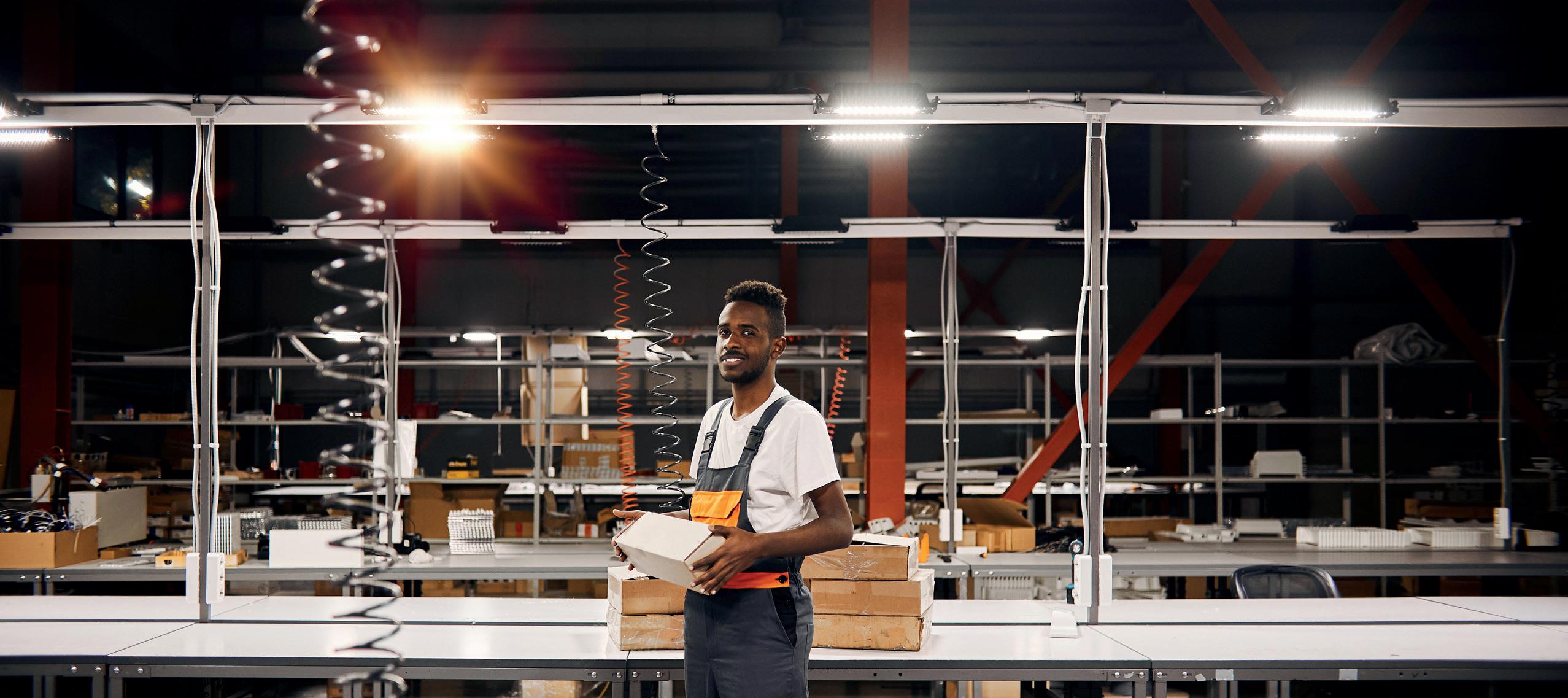
We recommend storing old fluorescent lamps and HID lamps according to Minnesota Pollution Control Agency (MPCA) procedures:
• Store in an area and manner that prevents breakage.
• Compact fluorescent lightbulbs (CFLs) contain small amounts of mercury that are harmful to the environment. It’s illegal to place a CFL in the garbage.
• Post notices to show employees where and how to store lamps.
• If on-site storage isn’t possible, transport the lamps to a storage location. A hazardous waste manifest isn’t needed as long as lamps are transported to a site within Minnesota. Shipping papers are required.
• Ballasts may contain polychlorinated biphenyls (PCBs). Storage and disposal of PCB ballasts must conform to the requirements of the Environmental Protection Agency and the MPCA.
• For more information about fluorescent lamps, high-intensity discharge lamps, and ballast storage and disposal requirements, contact your local county recycling offices. They may have recycling programs in your area. Or call the MPCA at 800-657-3864.
Rebate incentives and eligible technologies may change at any time. See page 3 for rebate details.
Planning to build a new facility? Take advantage of cash rebates and install energy-efficient lighting.
Eligible energy-efficient technologies include hard-wired LED fixtures and LED lamps in both interior and exterior lighting applications.
Contact your Energy Management Representative
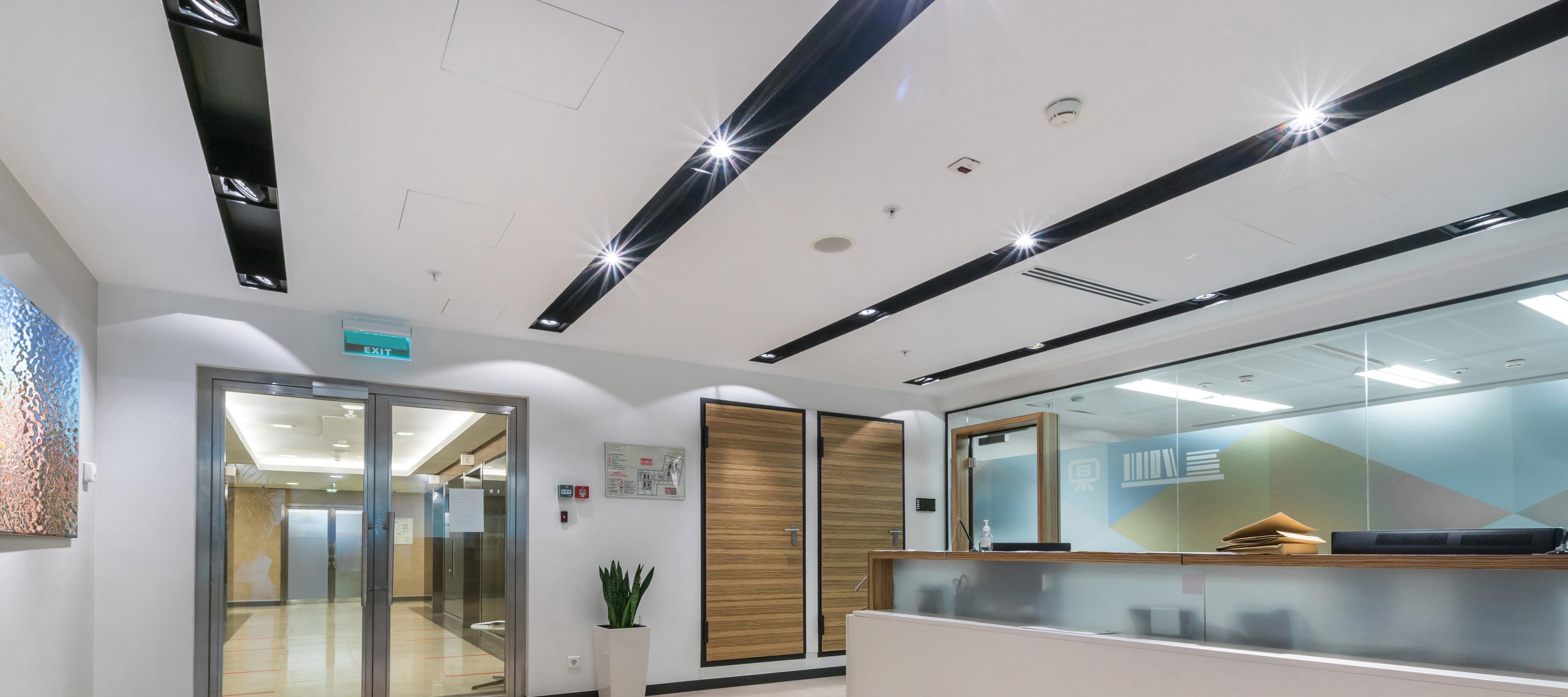
Outdoor Lighting Rates are available to supply lighting systems owned by our company. The price you pay includes initial installation costs, electricity used in ongoing operation, and all future maintenance costs. Charges vary by equipment type. Charges listed below were in effect on January 1, 2023, in Minnesota.
Our Drive Power program includes rebates for efficient electric motors, adjustable speed drives, electronically commutated motors, and hand dryers.
The U.S. Energy Information Administration (EIA) reports that nearly half of the electricity consumed in the manufacturing sector is used for powering motors that drive fans, pumps, conveyors, and compressors. Electricity costs make up about 96 percent of the total life-cycle cost of a motor, while capital costs and maintenance expenses account for 3 percent and 1 percent respectively.
Energy-efficient motors have other advantages too. They’re quieter. And because they operate at lower temperatures, they tend to last longer. Their superior design and construction lead to reduced downtime and maintenance costs. Plus, they have a higher power factor.

Our motor rebate program encourages industrial, commercial, and agricultural customers to purchase efficient new, replacement, or retrofit motors.
• 2007 Energy Independence and Security Act legislation set National Electrical Manufacturers Association Premium® as the efficiency standard for 1- to 200-horsepower totally enclosed fan-cooled (TEFC) and open drip-proof (ODP) motors manufactured after December 2010.
• Efficiency of TEFC and ODP motors must exceed NEMA Premium® efficiency levels to qualify for rebates for new motors and replacement of non-operating motors.
• TEFC and ODP motors replaced prior to failure must meet NEMA Premium® efficiency levels to qualify for rebates.
• Certain qualified motors may have limited availability in the market.
Our Minnesota industrial, commercial, and agricultural customers may qualify for rebates. Review the tables on the following pages for rebates and required efficiency rating by motor type, size, and speed. Motors exceeding 500 horsepower may qualify under our commercial and industrial grant program (see page 20). Contact one of our representatives for details.
We reserve the right to inspect and verify motor locations and installations before issuing rebates and to verify actual energy savings after installation.
Sizing is one of the most important factors in selecting motors. Undersized motors sometimes operate with overload conditions, which could lead to increased downtime and reduced life expectancy. Conversely, oversized motors contribute to reduced power factor and sometimes operate at reduced efficiency, which could add to your energy bill.
We recommend that you always match motor ratings to your load requirements. Consider the actual load levels, both starting and running, and the expected duration of each load.
Rebate per motor
Induction motors are the workhorses of commercial enterprises and used in virtually every manufacturing plant and office building. The largest energy savings in induction motor systems lies not in the motor but in the controls governing the motor’s operation. ASDs improve drive system performance and efficiency.
An ASD can match the speed of an AC motor to the requirements of a fluctuating load, such as a pump that moves changing fluid volumes during production. When this happens, the control valves, dampers, or other throttling mechanisms can be removed (or locked in full open positions), dramatically improving energy efficiency and reducing energy expenses by up to 50 percent.
ASD rebates
• Rebate of $60 per horsepower for process and other nonseasonal centrifugal applications.
• Rebate of $40 per horsepower for seasonal and HVAC centrifugal applications.
Guidelines
• Rebates cover ASD installation on motors from 1 to 500 horsepower operating under centrifugal loads.
• Applications associated with motors exceeding 500 horsepower may qualify under our commercial and industrial grant program (see page 20). Contact one of our representatives for details.
• System designer or installing contractor must ensure the entire facility complies with the Institute of Electrical and Electronics Engineers Standard 519 after completion of the ASD installation or retrofit. Failure to comply with this rule in ASD installations may result in disqualification of rebate requests.
An ECM uses 75 percent less energy than a standard fan motor.
Rebates are available if you retrofit existing exhaust and HVAC fans with energy-efficient ECMs. Rebates are based on motor horsepower.
ECM rebates
Rebate incentives and eligible technologies may change at any time. See page 3 for rebate details.
New for 2024! If you purchase an electric hand dryer, you may receive a rebate of $250 per dryer. To qualify hand dryers must use 5 watt-hours or less per use, operate with motion activation at a load of 1,500 watts or less, and not include electric heating elements.
Learn more at otpco.com/DrivePower.
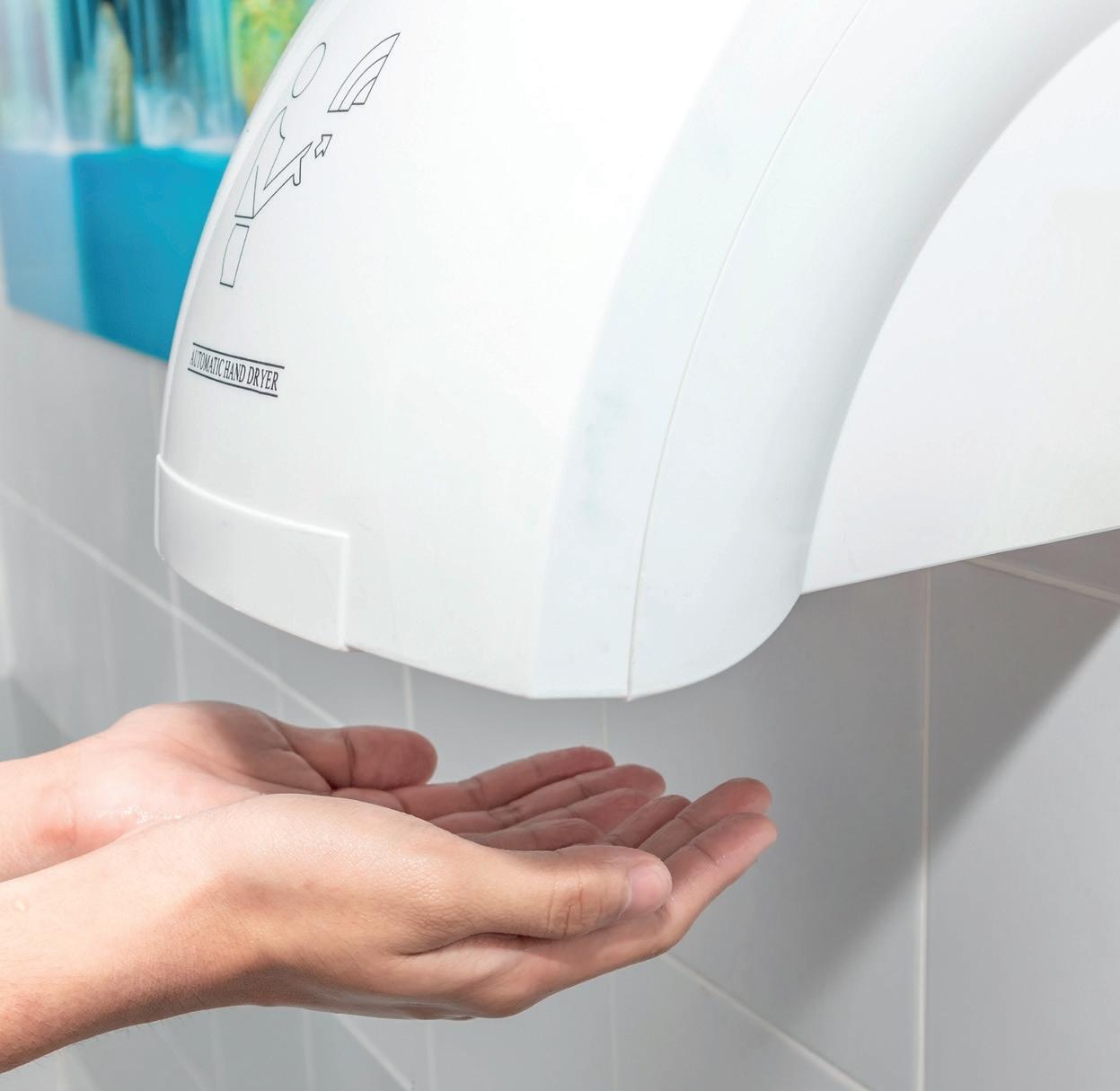
According to the U.S. Energy Information Administration, commercial refrigeration accounts for 16 percent to 18 percent of commercial energy use and as much as 70 percent of electricity consumption in some grocery stores. Because grocery store profit margins are narrow, every dollar in energy savings is the equivalent of increasing sales by $59.
When you install energy-efficient equipment, you’ll save with lower electric bills and up-front rebates.
Rebates are available for refrigeration rack system upgrades, stand alone condensing units, display cases and walk-in units, and preventive maintenance.
Commercial refrigeration rebates
Antisweat heater control (retrofit)
Antisweat heater control—condenser-based
Case lighting controls (retrofit)
Door addition to open cases—cooler (retrofit)
Door addition to open cases—freezer (retrofit)
High evaporator temperature cases
High-efficiency glass doors
LED lighting—low-temp
LED lighting—mid-temp
Night shades—coolers and freezers
Replace island case—multideck with doors (retrofit)
Thermal expansion valve (TXV) to electronic expansion valve (EEV)
$20/linear ft. of case
$40/linear ft. of case
$60/linear ft. of case
$50/linear ft. of case
$75/linear ft. of case
$20/linear ft. of case
$40/linear ft. of case
$100/door
$100/door
$20/linear ft. of case
$45/linear ft. of case
$15/total rack HP
This program focuses on customers operating large refrigeration systems with digital control capabilities. We’ll assess savings based on system size, control setting opportunities, and other system characteristics.
You can expect to reduce energy costs significantly and improve reliability of refrigeration systems. We’ll reimburse up to $10,000 toward the cost of a refrigeration optimization study and up to $2,500 toward expenses for contractor services to implement control setpoint changes. You must use our program study provider and receive prior approval to ensure reimbursement.
Commercial food service equipment rebates are available for ENERGY STAR® electric appliances, including foodholding cabinets, ovens, cooktops, griddles, dishwashers, refrigerators, electric steamers, freezers, and ice machines.
Electric kitchen equipment often provides a competitive advantage over alternate fuels by improving the cooking process, increasing production, improving food and air quality, and reducing kitchen safety hazards.
Commercial food service equipment rebates
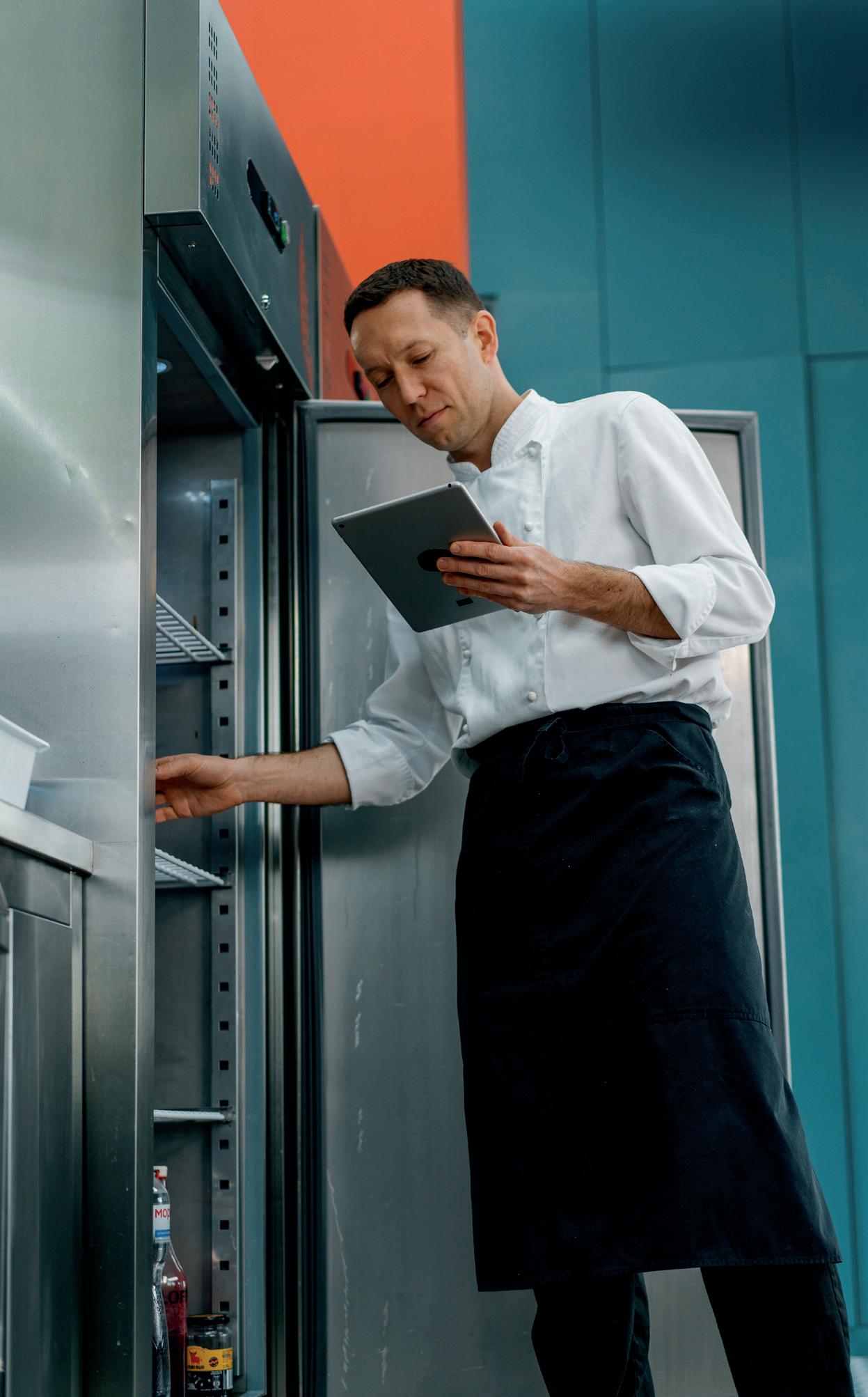
No matter the temperature, heat is always available in the air around us and in the ground. Heat pumps take advantage of that by moving heat in or out of buildings to keep spaces comfortable. Because they move heat instead of producing it, heat pumps operate with high efficiency.
Rebates are available for air-to-water, air-to-air standard or cold-climate, and geothermal heat pump installations. Documentation of qualifying efficiency ratings may be found through AHRI at ahridirectory.org. Indoor and outdoor components must match to qualify for rebates. Air-to-water heat pump efficiencies are based on manufacturer specification sheets.
To qualify for our rebates, equipment must meet the performance requirements below. Our rebates can be claimed in addition to federal incentives. Commercial customers installing an energy-efficiency rebate-eligible heat pump may qualify for financing options in addition to receiving rebates. Energy-efficiency rebates won’t exceed 75 percent of project costs. Geothermal heat pump rebates won’t exceed 50 percent of project costs. We encourage you to get and keep an AHRI certificate for your new system. Submit copies with your rebate application.
Receive an additional $40-per-ton rebate when an efficiency rebate-eligible cold-climate or geothermal heat pump is installed on our Dual Fuel, Deferred Load, or RDC Rate, or when a qualified air-to-water heat pump is installed on our Dual Fuel Rate.
CCHPs operate at an overall seasonal efficiency of 250 percent or more. They deliver comfort down to sub-zero temperatures and they cool too.
GHPs are clean, safe, efficient, and environmentally friendly and can deliver four to six units of heat for each unit of energy used. As a result, GHPs can reduce annual heating and cooling costs by up to 70 percent.
GHPs must meet ENERGY STAR® requirements at time of installation to qualify for IRA benefits and our rebates. If a unit isn’t labeled ENERGY STAR®, proof of the minimum COP and EER ratings must be provided with rebate application. Geothermal heat pump ratings
AWHPs improve the efficiency of hydronic underfloor heat storage systems by using free energy available in the air and transferring it through water for heating. This makes an AWHP a great option to upgrade the efficiency of an existing hydronic underfloor heating system or for a new system installation where geothermal might not be feasible. When paired with a buffer tank containing transfer coils, an AWHP can provide added savings by preheating domestic hot water.
Add a buffer tank to an ECO-qualified AWHP or a desuperheater to an ECO-qualified GHP installation and receive an additional $200-per-ton rebate when used for domestic hot water preheating. Buffer tank requires heating coils.
Tonnage based on associated heat pump unit. Limit 20 tons.
Example 1: A 3-ton ducted cold-climate heat pump installed by an approved contractor on an off-peak rate.
Use an approved certified contractor participating in our Quality installation program to receive an additional rebate of $200 per ton for a quality heat pump installation and $50 per unit for a quality air-conditioner installation. Applies to central or ductless mini-split systems. Certified contractors can be found online through our new Find a contractor tool.
2: A 10-ton geothermal heat pump (GHP) unit with a desuperheater installed by an approved contractor on an off-peak rate.
Looking to find a contractor with experience installing heat pumps, water heaters, electric heating, and other systems? Use our new Find a contractor tool to search by planned project type to see contractors near your chosen location.
Learn more at otpco.com/FindAContractor.
When it comes to your heating system, size is money.
Particularly when installing a high-efficiency geothermal heating system. Because of oversizing, geothermal heating systems are often cut from building construction budgets, which means missed energy-saving opportunities.
Advanced modeling programs are now available to help optimize both the building design and the geothermal system design to overcome budget issues. Our planning tools analyze usage patterns, review building materials and select alternatives to reduce heating and cooling requirements, and maximize installed-system benefits.
With an optimized design, a geothermal system may cost 25 percent to 40 percent less than typical estimates.
Call 800-493-3299 to speak with one of our Energy Management Representatives (also listed on the inside back cover) for assistance on designing your geothermal heating system.
In addition to our rebates (listed on pages 14 and 15), federal tax credits are also available for commercial installations. (See page 27 for details.)
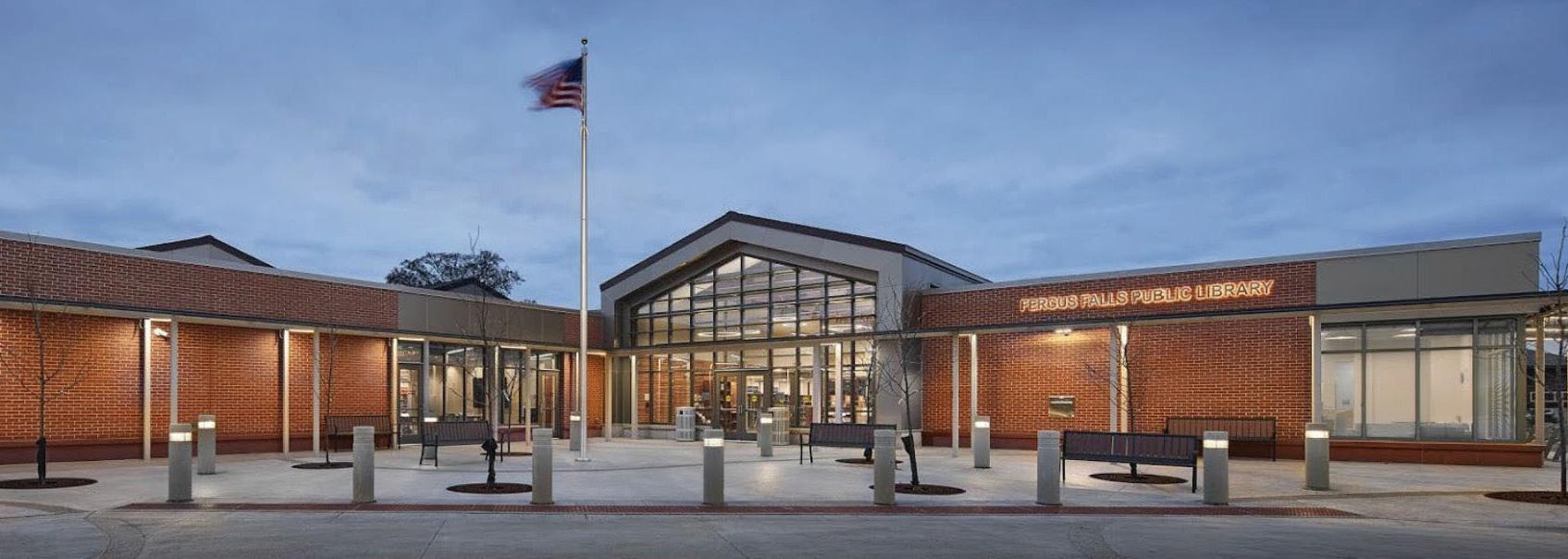
A $75-per-kilowatt (kW) rebate is available for storage technologies served on our Deferred Load, RDC, or Fixed Time of Delivery Rates. Eligible storage applications include:
• Central furnaces.
• Room units.
• Underfloor cable or panel systems embedded in sand.
• Electric boilers installed to serve underfloor hydronic systems embedded in sand.
• Ice storage applications.
A system must have adequate capacity to heat or cool the space during the rate’s maximum control period to qualify for a rebate. An underfloor system requires a sand base to serve as a heat sink. Qualifying projects must be new installations and a minimum of 9 kW in size.
In combined thermal-storage/heat pump systems, you’ll receive an additional $40-per-ton rebate for an efficiency rebate-qualified cold-climate or geothermal heat pump installed on a qualified off-peak rate. This rebate is in addition to efficiency rebates offered through our heat pump program
Rebates are available for electric heating technologies when a minimum of 9 kilowatts (kW) is permanently connected and served through our Dual Fuel or RDC Rate.
• Receive a $20-per-kW rebate for baseboard, cove heat, a garage unit heater, or radiant electric heating, including floor warming.*
• Receive a $40-per-kW rebate for an electric plenum heater, electric boiler, ducted electric furnace, efficiency rebate-qualified cold-climate or geothermal heat pump, or electric cable or panel storage heating system.**
Rebate for electric cable or panel storage heating is limited to Dual Fuel Rate installations only. For RDC Rate installations see our thermal-storage rebate above.
*Floor warming is nonstorage heating placed beneath flooring material.
**Electric cable or panel storage heating is limited to installations under new construction slab foundations.
To calculate the break-even point of electricity compared with natural gas, propane, or heating oil, find the price per kilowatt-hour (kWh) paid (prices vary by rate) and the efficiency level of the fossil fuel-operated equipment you’re comparing. The price shown is the all-in price fossil fuels must reach to break even with electricity prices.
costs for heat pump systems
Install a new electric water heater with a uniform energy factor (UEF) of .90 or higher to qualify for a controlled water heater rebate when it’s served on our Deferred Load, Dual Fuel, Controlled Water Heating, or Residential Demand Control Rate. A firm service rate also may qualify when an energy-control device is connected.
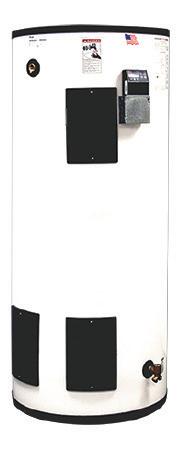
Receive a $10-per-month bill credit. You may choose to connect a radio receiver to your firm service electric panel to avoid the cost of adding an additional service panel and meter.
Electric equipment operates on a fraction of the energy traditional gas models use. New for 2024—purchase new electric technologies to receive rebates.
Install a permanently connected (hardwired) Level 2 electric vehicle charging station on an eligible rate to qualify for a $500 rebate. Eligible rates include Dual Fuel, Deferred Load, Fixed Time of Delivery, RDC, and our Electric Vehicle Charging Rate.
Support renewable energy with our TailWinds windgenerated energy program.
Energy is available for purchase in 100-kilowatt-hour blocks. You choose how much you want to buy. Use wind energy to power most of your business or a portion.
Once you enroll, you’ll see a small additional charge on your monthly electric bills.
We’ll provide electricity through other means if the wind doesn’t blow. No special equipment is needed. You’re committed for a minimum of one year—unless you move away from our service area.
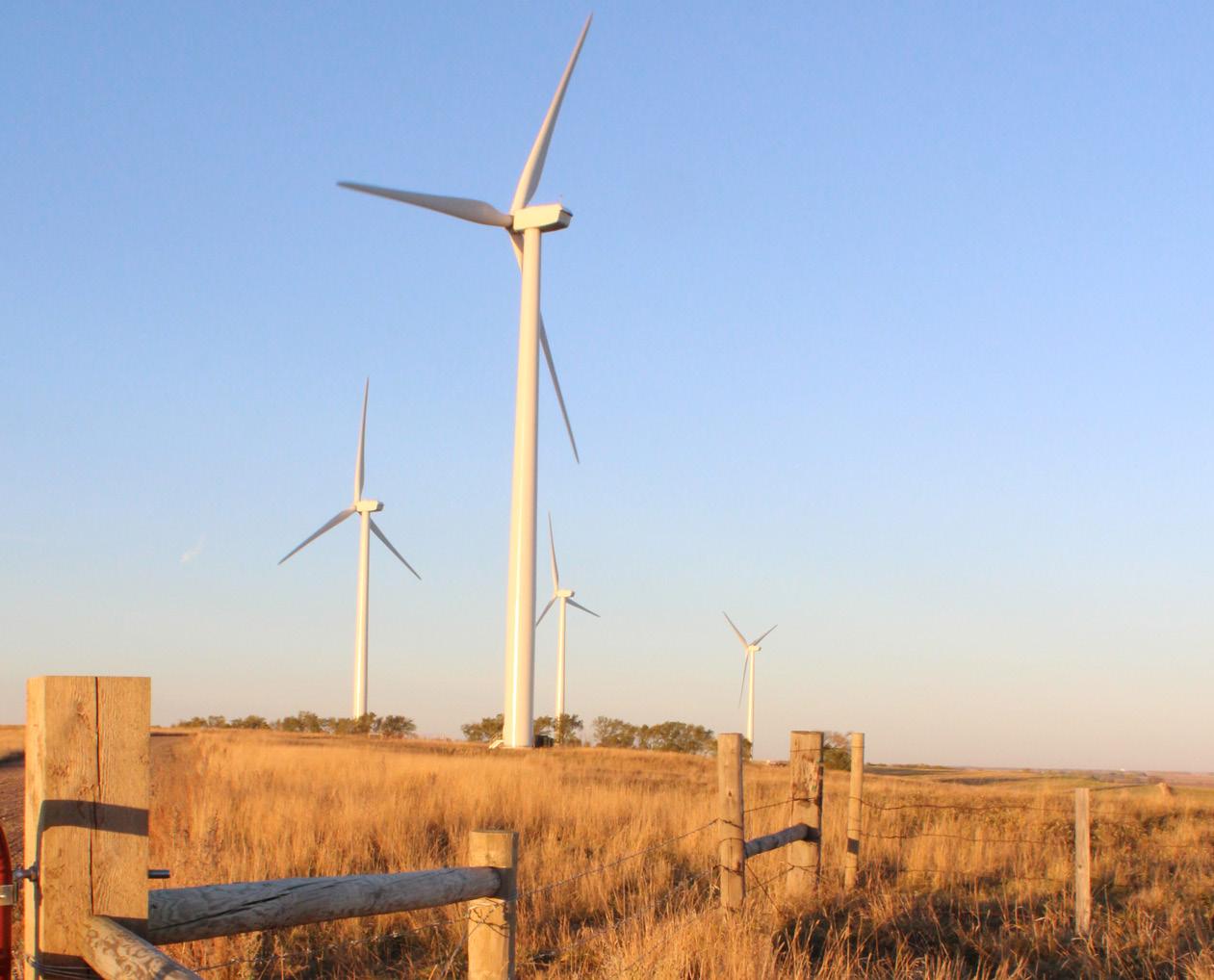
farm
We offer our Publicly Owned Property (POP) Solar program to eligible public entities including public education facilities and city, county, or tribal governments. This program is designed to showcase the benefits of solar photovoltaic (PV) generation and support projects that assist local communities. Federal and state incentives can combine with our rebate to reduce or eliminate upfront costs.
POP Solar projects may qualify for incentives of $1,500-per-kilowatt (AC) nameplate and up to 50 percent of project installation costs.
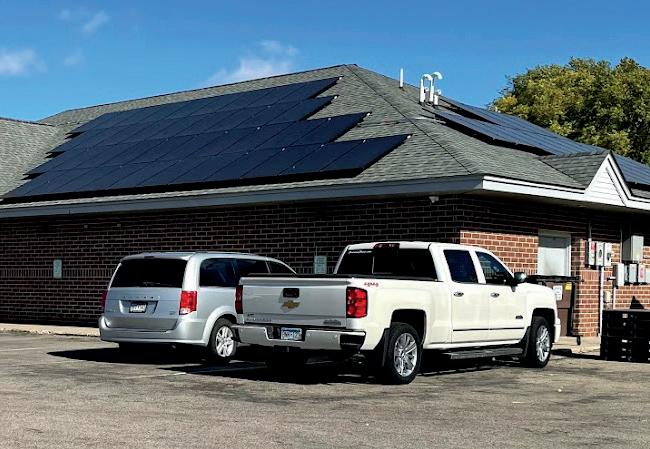
To qualify, you must:
• Participate in energy-efficiency projects and implement them with a simple payback of two years or less (based on an assessment by our company of onsite energyefficiency opportunities).
• Submit a cost-effectiveness evaluation of the proposed solar PV installation.
• Use North American Board of Certified Energy Practitioners (NABCEP) certified solar PV installers.
• Develop community/school/campus awareness, participation, and an educational integration plan.
• Select a site that offers optimal solar PV generation potential to maximize the benefits of distributed solar PV installations across our company’s Minnesota service area.
• Agree to transfer the renewable energy credits (RECs) from the POP Solar installation to our company.
Our POP Solar rebate may be combined with Solar for Schools, Solar for Public Buildings grant funds, and federal Inflation Reduction Act incentives, which include directpayment options to nonprofit organizations.
No one knows your business as well as you. Our grant program lets you submit energy-savings proposals based on your individual needs.
You’re likely aware of a number of ways you could improve your business’s energy efficiency. A list of possibilities might include:
• Replacing air compressors.
• Replacing chillers.
• Adding or replacing heat-recovery systems.
• Making building envelope improvements.
• Making process improvements.
Here’s how it works
• Submit your energy-efficiency proposal(s) using one of our grant proposal forms. Our representatives can help.
• We'll evaluate your proposal(s) to determine the effect of the improvements suggested.
• Grants are calculated based on kilowatt-hours of energy saved, kilowatts of demand reduced, and project costs.
• Preliminary evaluations provide estimated grant incentive amounts. Actual grant incentive amounts are subject to change.
• When installations are complete, you’ll receive a check for the approved amount.
• Energy-saving measures must be installed within six months of project approval unless special arrangements are made.
• We reserve the right to inspect and verify project location and installation before issuing the grant check and to verify installation and actual energy savings after project completion.
• Commercial and industrial grants may be capped. Funding limitations apply.
Minnesota Department of Energy Resources rules apply to measurement and verification of energy savings for large grant projects. If you anticipate energy savings of 1,000,000 kWh or more annually, consult your Industrial Services Engineer or Energy Management Representative to help ensure you qualify for program incentives.

Qualifying building owners, architectural and engineering firms, and developers may participate in our company’s FREE Integrated Building Design Plus (IBD Plus) program. IBD Plus is an integrated design process that puts energy efficiency at the forefront of new construction plans. Buildings must be at least 5,000 square feet and exceed baseline energy efficiency by 5 percent or more to qualify for our IBD Plus program and any incentives.
Benefits include:
• Free computerized energy-use modeling of design alternatives.
• Reimbursements to your architectural and design team for time commitments. Design team reimbursements are based on project size and are subject to caps.
• Cash incentives for incorporating energy efficiency into your final building design.
• Review of construction documents to ensure that your final building plans reflect intended efficiency.
• Verification to confirm that your building has been constructed to meet intended efficiency levels.
• Assistance for design professionals in optimizing geothermal heating and cooling opportunities.
For more information on IBD Plus or to apply, visit otpco.com/DesignPlus
Compressed air is often referred to as the fourth utility in industrial facilities. Compressed-air systems typically operate at just 10 percent to 15 percent efficiency, making compressed-air production one of the most energy-intensive and costly operations in many industrial settings.
We provide incentives to customers for efficiency improvements in compressed-air systems and for completing compressed-air recommissioning studies that adhere to our company’s guidelines.
Based on the findings of your audit, you might also be eligible for additional financial help to make efficiency upgrades to your compressed-air system through our commercial and industrial grant program (see page 20). System
No-loss drains
Efficient compressors < 50 HP
Flow controllers
Low-pressure drop filters
Storage tanks ≥ 100 HP
Leak studies ≥ 50 HP
Compressed-air recommissioning study
Compressed-air audit
$150 per drain
$200 per HP
$2,500 per controller
$3 per compressor horsepower
$20 per compressor horsepower
50% of cost up to $3,000
100% of cost up to $10,000
50% of cost up to $10,000
Specific program rules and requirements apply. Applicants must use a compressed-air recommissioning study provider we’ve preapproved to be eligible for the 100 percent study cost incentive.
For more information on our compressed-air efficiency program or to apply, visit otpco.com/CompressedAir.
Recommissioning and retrocommissioning, both commonly referred to as RCx, are processes that ensure specific building systems perform interactively according to design intent and operational needs.
Recommissioning ensures that a previously commissioned building is running at optimal performance.
Retrocommissioning involves tuning up an existing building that never was commissioned formally after construction. The retrocommissioning process identifies less-than-optimal performance in an existing facility’s HVAC systems and identifies cost-effective energy-saving adjustments.
Four levels of program services are offered.
Traditional RCx involves an extensive process of gathering data on energy-using systems in your building. The benefits include:
• A rebate for 30 percent of the RCx study cost and savings of $400 per kilowatt, up to $20,000, for eligible customers.
• Potential energy cost savings up to 20 percent.
• A more comfortable facility with fewer occupant complaints.
• Longer equipment life and lower energy bills.
• A detailed building assessment completed by a qualified engineering professional.
Eligible buildings must have at least 50,000 square feet of conditioned space.
Our Turnkey RCx study makes it easy to identify energysaving projects. It also ensures upgrades are completed on time so savings up to 20 percent on energy bills begin rapidly.
We reimburse pre-approved customers for 100 percent of RCx study costs as follows:
• First half paid when study is completed.
• Second half paid when implementation of all required efficiency improvements are successfully completed.
Eligible buildings must have at least 50,000 square feet of conditioned space.
RCx Lite offers lower study costs and a shorter timeline with reduced energy-savings requirements. Measures may include tuning set points, optimizing controls, and using low/no-cost upgrades capable of achieving savings of 3 percent to 12 percent in most facilities. The benefits include:
• Savings up to 75 percent of those achieved in a traditional, but more costly, RCx study—often for as little as 25 percent of the cost.
• A rebate for 50 percent of the RCx Lite study cost, up to a maximum of $10,000, upon completion of required measures.
Eligible buildings must have 25,000 to 50,000 square feet of conditioned space.
This fast-track, low-risk program helps building owners capture energy savings from their existing building equipment’s operation. Customers typically cut 5 percent to 10 percent of their energy costs by participating. The benefits include:
• A rebate up to $9,500 per participant that covers 100 percent of the program cost.
• To be eligible, buildings must have a digital control of their building’s HVAC equipment via a building automation system (BAS).
Pre-approval of Traditional RCx, Turnkey RCx, RCx Lite, and Turnkey RCx Lite applications is required to receive incentives
Commercial refrigeration optimization and compressed-air studies are also available. See pages 13 and 21 for details.
Contact your Energy Management Representative or Industrial Services Engineer early in the development of your project to learn more about these programs.
• The amount of electricity you use.
• The rate at which it’s used.
• The time(s) it’s used.
We offer a variety of energy-efficient options that help you save money by reducing the amount of electricity you use and the rate at which you use it. By addressing the time you use it, effective load-management practices can help you save even more.
Adjusting your operations in ways that shift your load from peak demand helps us operate more efficiently. In turn, we’ll pass on savings to you through special rates.
If you choose interruptible service, we’ll use radio signals to control predetermined electric equipment during peak energy use or emergency situations. You’ll benefit with discounted off-peak rates that can substantially reduce your total energy costs.

The ability to control system peaks reduces our operating costs. We pass on the savings to our customers in the form of reduced electric rates. We use energy control:
• When our customers’ loads create peak demand periods.
• During testing or emergency periods, such as restoring service following a storm.
• When wholesale market energy prices are high and we must purchase a portion of our energy.
Our Deferred Load Rate cuts operating costs for a heating or cooling storage system by nearly 30 percent compared to our standard electric rates.
A heat pump installed on our Deferred Load Rate is eligible for cycling during summer-season peak control events. This cycling option provides 15 minutes of control followed by 15 minutes of service. Cycling allows your heat pump to keep spaces cool and comfortable.
In addition to rebates for qualified electric heating applications, water-heating equipment and Level 2 electric vehicle charging equipment may be added to this rate and qualify for rebates when permanently connected, metered, and subject to control.
• The rate permits control 12 months a year.
• We may control deferred loads up to 14 hours a day.
• Summer-season cycled control is available.
• When system conditions permit, we include a recovery period when a control event lasts several hours.
• Rates vary by season. We apply winter-season rates October 1 through May 31 and summer-season rates June 1 through September 30.
• Cost-of-energy charges apply.
• Controlled-service systems must be permanently connected and interruptible. Systems that don’t interrupt loads during control events as required by the rate may be subject to penalty charges, and application of this rate may be discontinued.
Cut energy costs by more than half when you recharge your heat- or cool-storage systems overnight, taking advantage of energy generated during off-peak hours. That’s big savings!
• We energize fixed-time-of-delivery loads during predetermined off-peak hours between 10 p.m. and 6 a.m. 365 days a year.
• Rates vary by season. We apply winter-season rates October 1 through May 31 and summer-season rates June 1 through September 30.
• Cost-of-energy charges apply.
• Systems must be permanently connected and service interrupted between 6 a.m. and 10 p.m. Systems with metered use during these hours may be subject to penalty charges, and application of this rate may be discontinued.
In addition to rebates on qualified thermal-storage heating technologies, Level 2 electric vehicle charging equipment may be added to this rate and qualify for rebates.
System sizing is important. Heat- and cool-storage systems served on off-peak rates must be sized to create adequate stores to warm or cool spaces during the maximum control period allowed by the rate to be eligible for rebates.
Qualify for a rate of about half the standard price per kilowatt-hour when you install a dual-fuel system that uses off-peak electricity as its primary fuel. A secondary heating fuel, such as natural gas, propane, or fuel oil, supplies heat during control conditions. The switch from electricity to the secondary fuel and back to electricity is accomplished automatically with radio signals.
You must sign a liability waiver to place nonautomatic hand-fed systems, such as wood, pellets, and corn systems, on this rate.
• Summer-season cycling of qualified loads is available.
• The rate permits heating system control up to 24 hours a day.
• The rate permits water heater control up to 14 hours a day.
• Rates vary by season. We apply winter-season rates October 1 through May 31 and summer-season rates June 1 through September 30.
• Cost-of-energy charges apply.
• Controlled-service systems must be permanently connected and interruptible. Systems that don’t interrupt loads during control events as required by the rate may be subject to penalty charges, and application of this rate may be discontinued.
A heat pump installed on our Dual Fuel Rate is eligible for cycling during occasional summer-season peak control events. This cycling option provides 15 minutes of control followed by 15 minutes of service.
In addition to rebates for qualified electric heating applications, water-heating equipment and Level 2 electric vehicle charging equipment may be added to this rate and qualify for rebates when permanently connected, metered, and subject to control.
With our Drive On Off-Peak Electric Vehicle Rate, Minnesota customers can recharge their electric vehicles overnight for less. On this rate, energy is delivered only between 10 p.m. and 6 a.m. to take advantage of the lowest-priced off-peak energy. Eligibility requirements include proof of electric vehicle ownership and appropriate electrical service interconnection facilities.
• We energize off-peak electric vehicle loads during predetermined off-peak hours between 10 p.m. and 6 a.m. 365 days a year.
• Rates vary by season. We apply winter-season rates October 1 through May 31 and summer-season rates June 1 through September 30.
• Cost-of-energy charges apply.
• Systems must be interrupted between 6 a.m. and 10 p.m.
Level 2 electric vehicle charging equipment may be added to this rate and qualify for rebates when permanently connected, metered, and subject to service according to the rate.
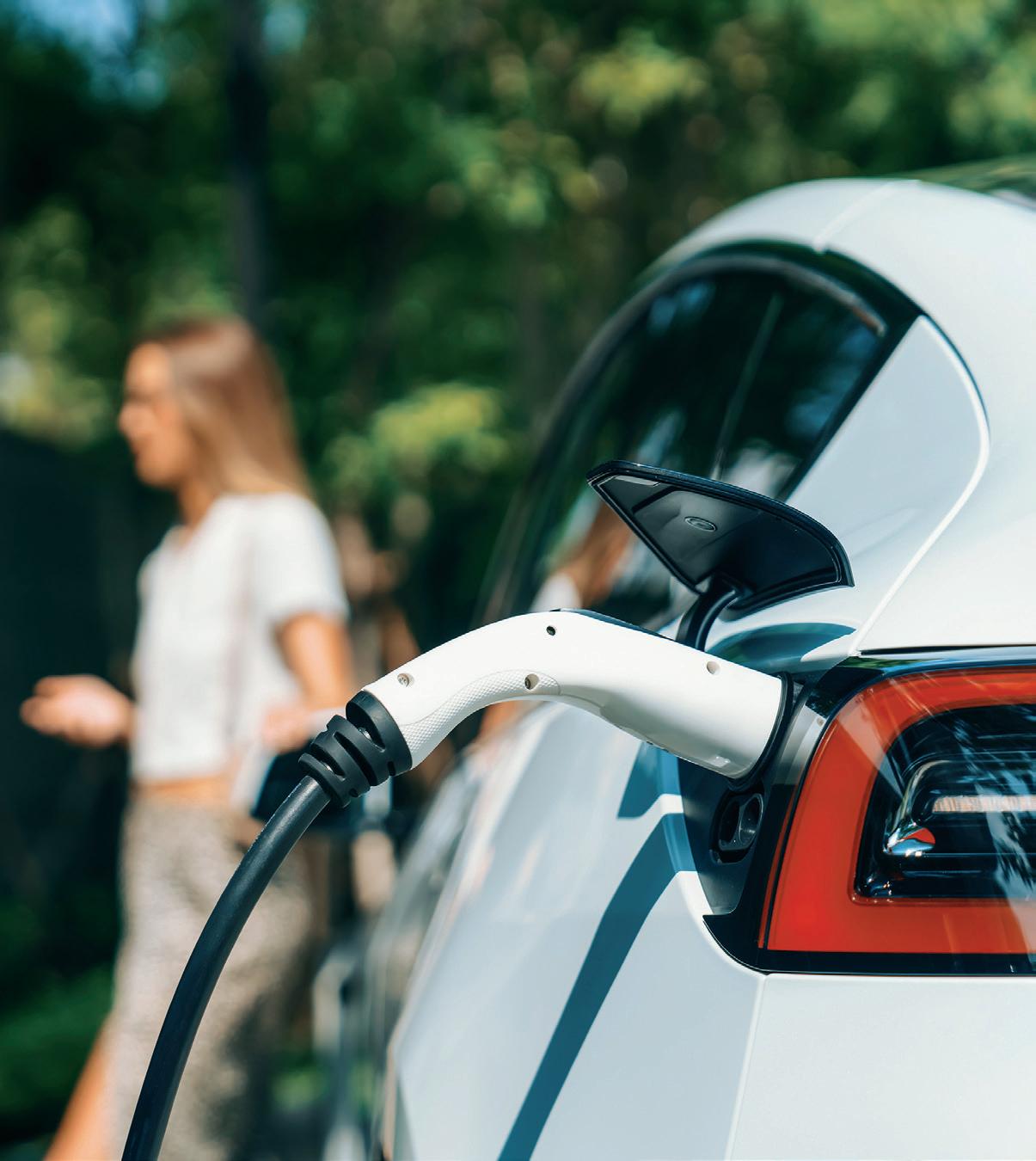
Electric water heating is energy efficient and clean. And our Water Heating Control Rate can save you up to 25 percent compared to our standard price of electricity.
An alternative for customers not interested in, or not able to install separate service panels, is a $10-a-month credit on their monthly bills in return for allowing us to control water heaters wired to their firm-service meters.
Water heaters also may be installed on certain electric space-heating rates, including our Dual Fuel and Deferred Load Rates, which offer greater savings.
In all cases an electrician must provide wiring to our radio receiver.
• Rates permit control 12 months a year.
• Rates permit water heaters to be controlled up to 14 hours a day.
• We interrupt long control periods whenever possible to allow the water heater to recover.
• Rates vary by season. We apply winter-season rates October 1 through May 31 and summer-season rates June 1 through September 30.
• Cost-of-energy charges apply.
• Controlled-service systems must be permanently connected and interruptible. Systems that don’t interrupt loads during control events as required by the rate may be subject to penalty charges, and application of the off-peak rate may be discontinued.
Rebates are available for new off-peak electric waterheating installations with proof of a minimum 90 percent efficiency.
Small commercial businesses have the opportunity to conserve electricity—and save money—while helping us manage summer’s high energy-use periods by allowing us to cycle their air conditioners. Earn a credit of $6 per ton of air-conditioning load per month in June, July, August, and September. A 5-ton air-conditioning load would qualify for a bill credit of $30 a month.
If you qualify for CoolSavings, a company representative will install a radio receiver on the outside of your business to automatically control your air-conditioning system.
• Summer-season control applies June 1 through September 30.
• A maximum of 300 hours of cycled control is permitted for the summer season.
• We’ll cycle equipment on a 15-minute on/15-minute off schedule when control is needed.
• Commercial customers with dual stage air conditioners are allowed to have the first stage run without interruption while the second stage is shut off during the entire control event.
You must have a centralized cooling system, such as an air-source heat pump or central air conditioner, to be eligible for CoolSavings. Window units or ductless air conditioning systems do not qualify for the program, nor do units already served on a controlled rate. To enroll in CoolSavings, you must be the property owner.
We reserve the right to deny participation for limited-use structures.
To sign up for our CoolSavings program— or for answers to any questions you may have—contact your Energy Management Representative or call our Idea Center at 800-493-3299.
The Inflation Reduction Act offers incentives for businesses and tax-exempt organizations willing to invest in electric and energy-efficient technologies. Incentives include federal tax deductions, tax credits, and direct payments to tax-exempt entities.
• A tax credit is available for 30 percent of the upfront cost of a geothermal heating project. Businesses that use domestic building materials will receive a 40 percent credit. If you’re in an energy community, such as Fergus Falls, the tax credit could be up to 50 percent.
• A tax deduction is available for energy-efficiency improvements to a commercial building. The deduction is $2.50 to $5 per square foot based on reduction in energy use. Businesses must increase the energy efficiency of existing buildings by at least 25 percent to claim tax deductions. Improvements eligible for deductions include interior lighting, heating, cooling, ventilation, water heating, and building envelope improvements and may be combined with our rebates.
• A tax credit is available up to $40,000 per vehicle for the new purchase of a commercial clean vehicle, including a battery electric vehicle (BEV), a plug-in hybrid electric vehicle (PHEV), or a fuel cell electric vehicle (FCEV). This credit is based on vehicle cost as it compares to an alternate fossil-fuel option.
• A tax credit is available for 30 percent of the cost per electric vehicle charger, up to $100,000, when installed on business property.
• Nonprofits, state entities, and municipalities may receive direct payment of certain tax credits, such as the Investment Tax Credit and Production Tax Credit.
Consult with your accountant or tax preparer regarding energy-efficiency purchases.
Credit summary
* Applies only to projects less than 1 MW in size. Larger projects are subject to federal labor requirements.
** Project must have 100% of steel or iron and 40% of manufactured products produced in the U.S.
*** Defined as a census tract, or directly adjoining tract, in which a coal mine has closed after 1999, or in which a coal-fired electric generating unit has been retired after 2009.
**** Defined as a census tract where, for 20% of the population, the median family income doesn’t exceed 80% of the statewide median family income, or if the tract is located on American Indian land.
We’re dedicated to the growth and vitality of the businesses we serve. Our team also can help identify community partnerships, financing packages, and labor pools to help ensure the success of new businesses.
If you’d like to speak with a representative, call our Idea Center at 800-493-3299 or contact the below individuals directly.
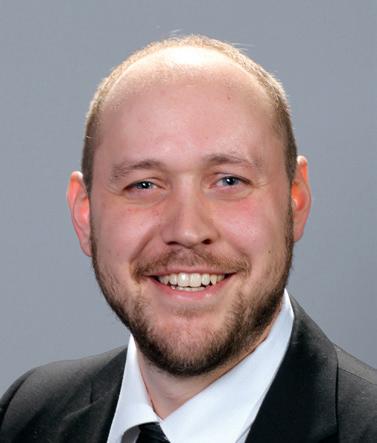
Chris Waltz, C.E.M. Manager, Sales Fergus Falls, MN 218-739-8492 cwaltz@otpco.com

Todd Kadry
Industrial Services Engineer Fergus Falls, MN 218-739-8286 tkadry@otpco.com
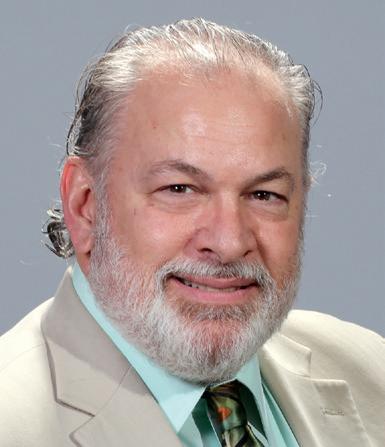
Mark Remer, C.E.M., C.E.P. Senior Industrial Services Engineer Fergus Falls, MN 218-739-8967 mremer@otpco.com

Bill Gronwold Energy Management Representative for the Fergus Falls, MN area 218-205-1689 wgronwold@otpco.com
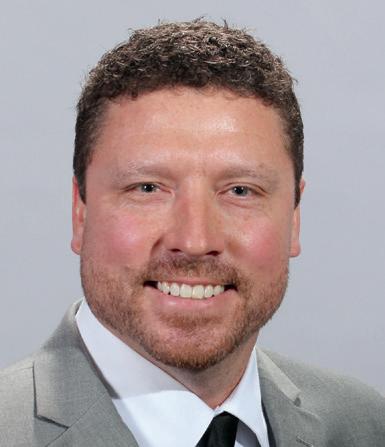
Andrew Martig Energy Management Representative for the Morris, MN area 320-247-3118 amartig@otpco.com
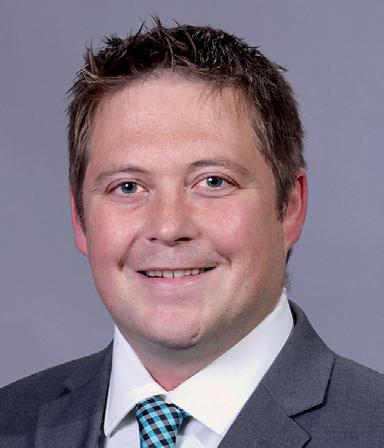
Aaron Sigette, C.E.M. Energy Management Representative for Crookston and Hallock, MN areas 701-230-3305
asigette@otpco.com

Jeff Hoff Energy Management Representative for Jamestown and Oakes, ND areas 218-739-8462 jhoff@otpco.com
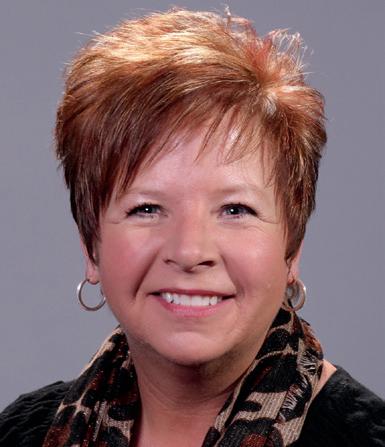
Lori Moxness Manager, Energy Management Fergus Falls, MN 218-205-1942 lmoxness@otpco.com

Scott Sigette Energy Management Representative for Devils Lake, Langdon, and Rugby, ND areas 701-351-3502
ssigette@otpco.com
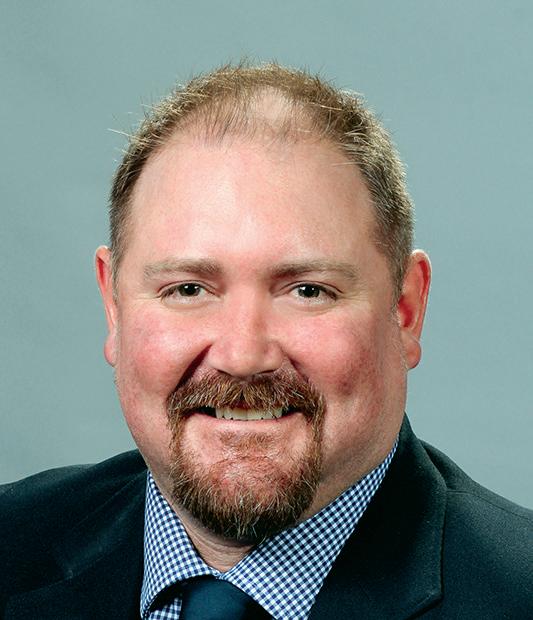
Brandon Johnson, C.E.M. Energy Management Representative for the Bemidji, MN area 218-739-8215 bpjohnson@otpco.com
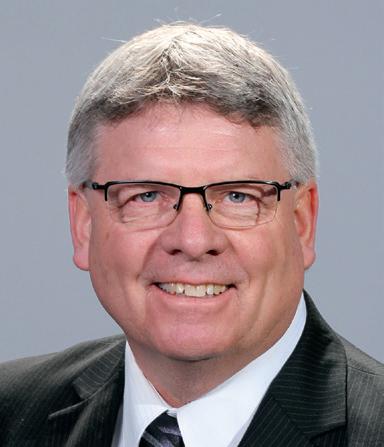
Brad Nelson, C.E.M., C.L.E.P., C.D.S.M. Energy Management Representative for Milbank, SD and Wahpeton, ND areas 605-949-1779 bnelson@otpco.com

Jesse Tomford Manager, Industrial Services Fergus Falls, MN 218-739-8474
jtomford@otpco.com
Fergus Falls, MN 56538-0496

